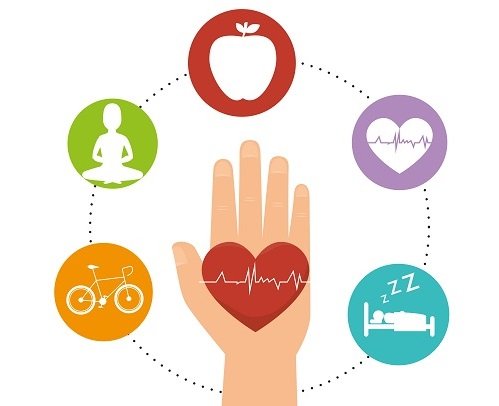Enhancing Physical and Mental Well-being During Winter: 15 Evidence-Based Approaches
The winter season presents unique challenges to maintaining optimal physical and mental health. Reduced sunlight exposure can trigger Seasonal Affective Disorder (SAD), characterized by decreased mood, energy levels, and motivation. Simultaneously, inclement weather often restricts outdoor physical activity. This article presents fifteen evidence-based strategies, grounded in exercise science and behavioral change theories, to mitigate these challenges and promote holistic well-being throughout the winter. Key concepts include the Transtheoretical Model of Behavior Change, which outlines stages of readiness for behavior modification; the principles of exercise prescription (FITT principle – Frequency, Intensity, Time, Type); self-efficacy, an individual's belief in their capacity to execute behaviors necessary to produce specific performance attainments; and social cognitive theory, which emphasizes the role of social learning and environmental factors in behavior.
1. Prioritizing Sleep Hygiene: Sufficient sleep is crucial for both physical and mental restoration. Prioritizing sleep hygiene, including establishing consistent sleep schedules and creating a relaxing bedtime routine, significantly impacts energy levels, mood, and motivation for physical activity. This aligns with the principles of holistic well-being, recognizing that physical activity is only one component of overall health.
2. Structured Indoor Exercise Programs: For individuals in the preparation or action stages of the Transtheoretical Model, structured indoor exercise programs offer a systematic approach to fitness. Gyms, online fitness platforms, and virtual fitness communities provide accountability and a framework for adhering to the FITT principles of exercise prescription (frequency, intensity, time, and type) for optimal results. High-Intensity Interval Training (HIIT) programs, for example, are highly efficient and can be tailored to individual fitness levels.
3. Leveraging Technology for Fitness: Fitness tracking apps and online workout videos offer personalized feedback, progress monitoring, and increased motivation. These tools cater to diverse learning styles and technological proficiency, enhancing accessibility and engagement. The self-monitoring and goal-setting features within these apps support self-efficacy and adherence to fitness regimens.
4. Harnessing the Power of Home-Based Fitness: Establishing a home gym, using bodyweight exercises, or incorporating resistance bands provides convenient and accessible alternatives to traditional gym memberships. This strategy empowers individuals in the contemplation or maintenance stages of change, minimizing logistical barriers to exercise and fostering self-efficacy.
5. Community Engagement and Social Support: Group fitness classes, winter charity runs, and team sports leverage social cognitive theory by providing social support, observational learning, and a sense of community. This shared experience combats isolation and promotes adherence to exercise programs.
6. Embracing Indoor Alternatives: Indoor activities such as swimming, rock climbing, or ice hockey provide structured exercise environments and opportunities for social interaction. These alternatives offer diverse intensity levels and cater to various fitness levels and interests, aligning with principles of individualization in exercise prescription.
7. Mindfulness and Winter Yoga: Mindfulness practices, including yoga, meditation, and deep breathing exercises, are effective in managing stress and improving mental well-being. Restorative yoga, in particular, promotes mental resilience and combats the potential negative psychological effects of shorter daylight hours and colder weather.
8. Creative Movement: Incorporating spontaneous movement and enjoyable activities like dancing into daily routines improves cardiovascular health and boosts mood. This approach aligns with principles of intrinsic motivation, making exercise more enjoyable and sustainable.
9. Adapting to Winter Recreation: Winter sports such as skiing, snowboarding, or ice skating provide a fun and engaging way to remain active while enjoying the season. The social aspect of group participation further enhances adherence.
10. Incorporating Daily Activities into Physical Activity: Simple modifications to daily routines, like taking the stairs or shoveling snow (with safety precautions), contribute to increased daily activity. These small adjustments, aligned with mindful movement principles, can significantly enhance overall activity levels.
11. Home-Based Workouts: The vast array of online resources and workout videos offers adaptable options for diverse fitness levels and preferences, making this a cost-effective and accessible approach.
12. Winterizing Cycling: Utilizing fat-tire bikes enables year-round cycling, showcasing adaptation to environmental challenges and maximizing adherence to a physical activity plan.
13. Exploring Adaptive Exercise: Activities like indoor rock climbing provide challenging and engaging physical activity adaptable to various fitness levels.
14. Utilizing Inclement Weather: Transforming chores like snow shoveling (with proper safety measures) into physical activity opportunities provides a practical application of integrating exercise into daily routines.
15. Strategic Winter Hiking: Winter hiking, with appropriate safety precautions, offers a combination of physical activity and nature exposure beneficial for physical and mental well-being.
Conclusions and Recommendations
Successfully navigating the challenges of winter and maintaining physical and mental well-being requires a holistic approach. Integrating evidence-based strategies, grounded in exercise science principles and behavioral change models, enables individuals to overcome seasonal obstacles. Future research should focus on comparative effectiveness studies across diverse populations, considering factors like age, socioeconomic status, and pre-existing health conditions. The development and implementation of culturally sensitive and accessible interventions, including improved access to indoor facilities and technology-based programs, are crucial for maximizing the impact of these strategies and promoting community-wide health and well-being. A longitudinal study analyzing the long-term effects of these combined strategies could also be valuable.
Reader Pool: Considering the integrated approach presented in this article, what innovative strategies or interventions could further enhance the effectiveness of promoting consistent physical activity and mental well-being throughout the winter months, especially within underserved or marginalized communities?





No comments yet. Be the first to share your thoughts!